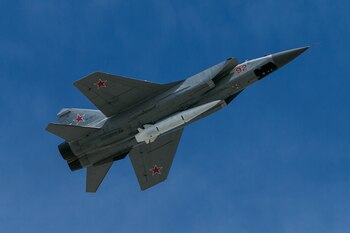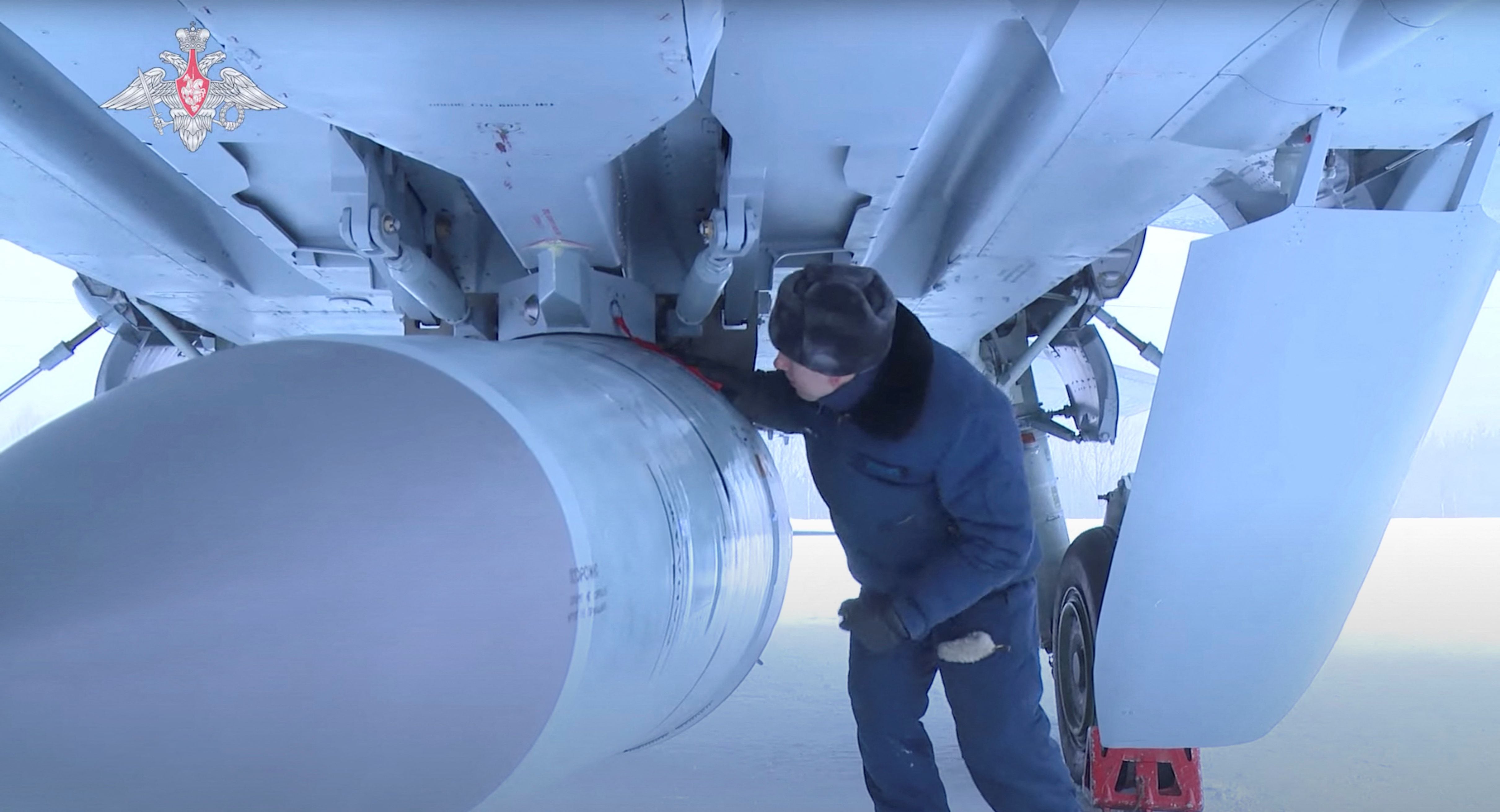
Russia claims that it is using hypersonic missiles against Ukraine, a statement that President Joe Biden confirmed on Monday at the quarterly meeting of executive directors of the Business Roundtable. These types of missiles travel at more than five times the speed of sound and have not been used in combat before.
A spokesman for the Russian Defense Ministry said Saturday that Russia had used a Kinzhal hypersonic missile, or “dagger”, late last week to destroy an ammunition depot in western Ukraine.
On Sunday, the Kremlin said its forces had launched hypersonic missiles for the second time, this time from airspace over Crimea, destroying a fuel storage facility in Ukraine's Mykolaiv region, according to a statement from the Russian Defense Ministry.
Weapons specialists and the governments of the United States and the United Kingdom have played down Russia's hypersonic capabilities and the degree of importance of their use on the battlefield.
What are these missiles? And what would it mean if Russia used them? Here's what you need to know.
What are hypersonic missiles?
Hypersonic weapons fly at least at Mach 5, that is, five times the speed of sound.
There are two main types: hypersonic cruise missiles, which work with scramjets -high-speed engines-; and hypersonic glide vehicles, which are launched from a rocket but slide towards their target.
The Kinzhal, an airborne ballistic missile that can be maneuvered, is a modified version of Russia's Iskander missile. “The Iskander missile has already been used in the [Russia-Ukraine] conflict several times, but it is launched from the ground. It's very similar,” said Tom Karako, senior researcher at the Center for Strategic and International Studies, a think thank you from Washington, and director of the Missile Defense Project.

Karako, co-author of a report entitled “Complex Air Defense: Countering the Hypersonic Missile Threat”, said that other types of missiles enter the atmosphere at hypersonic speeds. What people mean when they say hypersonic is a weapon “that is capable of maintaining hypersonic speeds for a long time,” he said.
The Iskander and Kinzhal missiles can follow low trajectories and are maneuverable.
That makes it more difficult to figure out where the missile is going, what the intended target is and what the trajectory is, which “complicates the defense work,” he said.
What distinguishes the Kinzhal hypersonic missile?
According to statements in the Russian media, Kinzhal can reach Mach 10. Russia tested the weapon in July 2018, launched from a modified MiG-31 fighter, according to US intelligence cited in a Congressional Investigation Service report published on March 17. He hit a target at a distance of about 800 kilometers.
The CRS report states that the Kinzhal could eventually be equipped with a nuclear warhead, and is capable of hitting ground and naval targets, although it warned that the weapon's performance characteristics have not been verified by US intelligence and that analysts are skeptics. Missiles are designed to evade sophisticated defenses.
Putin unveiled Kinzhal during a nationwide televised speech ahead of the 2018 Russian presidential election.
At the time, the Pentagon downplayed Putin's speech, saying that the US assessments had already taken into account Russia's weapons capabilities, according to The Guardian.
“It is a great misperception to think that these things cannot be defeated, they cannot be defended,” Karako said. “At the end of the day, they're just missiles.”
Which countries have hypersonic missiles?
Russia, China and the United States have the most advanced hypersonic weapons programs, but other countries such as Japan, Germany, India and Australia are also developing them, according to the CRS report.
Russia has been pursuing hypersonic weapons since the 1980s, but has accelerated its efforts in response to the withdrawal of the United States from the Anti-Ballistic Missile Treaty in 2002 and the US defense missile deployments on US soil and in Europe, the CRS. In addition to Kinzhal, Russia is working on two other hypersonic weapons programs: the 3M22 Tsirkon (or Zircon) and the Avangard.
The United States has been researching hypersonic weapons since the early 2000s and is developing them under the Navy's Conventional Prompt Strike program, as well as other programs under the Air Force, the Defense Advanced Research Projects Agency and the Army.
(C) The Washington Post.-
KEEP READING:
Últimas Noticias
Debanhi Escobar: they secured the motel where she was found lifeless in a cistern

The oldest person in the world died at the age of 119

Macabre find in CDMX: they left a body bagged and tied in a taxi
The eagles of America will face Manchester City in a duel of legends. Here are the details

Why is it good to bring dogs out to know the world when they are puppies




